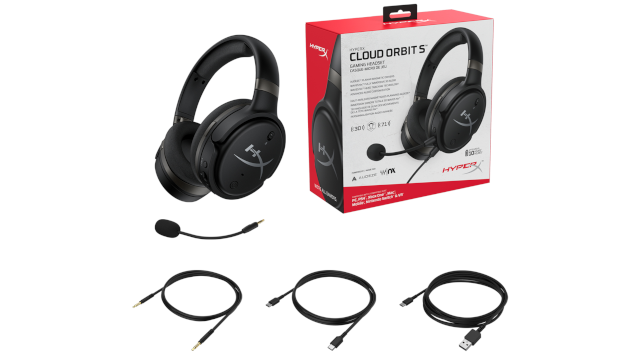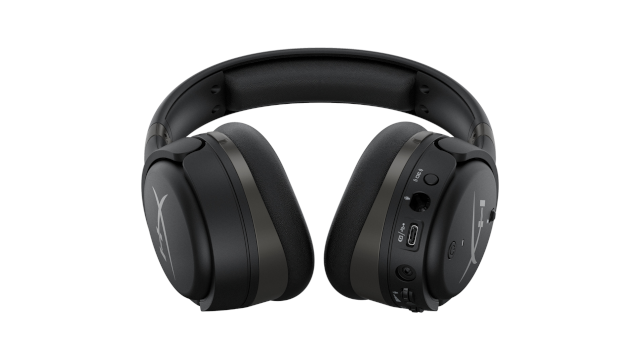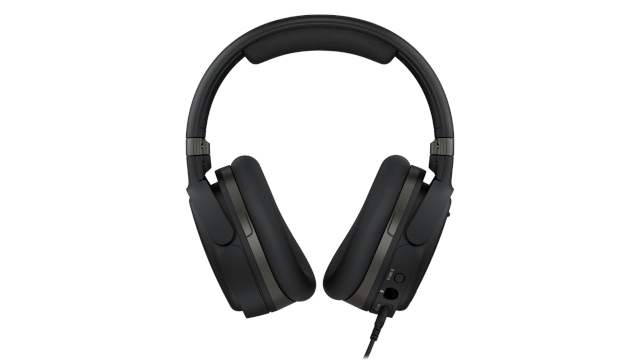There are a few big names in the gaming headset space, and for a long time, Turtle Beach garnered most of the name recognition. Depending on your platform, you may also be familiar with Astro, Logitech, Corsair, or HyperX. One name you may not know is Audeze, unless you’re a true audiophile with interests in music and other media beyond just games.
Audeze hasn’t really broken into the games market the way they may want, but that’s about to change thanks to their partnership with HyperX.
The HyperX Cloud Orbit S is, in almost every way, the same headset as the phenomenal Audeze Mobius, now repackaged for a cheaper price with a name more familiar. What does that all add up to? A versatile headset with few peers, if any.

So We Meet Again
I reviewed the Audeze Mobius earlier this year, so it was funny when my review unit of the HyperX Cloud Orbit S arrived on my doorstep. Though the box is different and the manual is more to the point — the Mobius booklet is “The Traveler’s Handbook to the Mobius Universe” while its HyperX is regular plain — very little else inside is different, and that’s a beautiful thing.
The marquee feature of the Cloud Orbit S is its true 3D audio experience. Built using Waves Nx with optional head-tracking technology, the subtlety of every movement in-game is mapped in such an unrivaled manner that for anyone who plays competitively, there’s no better choice.
I play PUBG a lot and with a serious drive to play well, and I can confirm I’ve actually played better and won more since I switched to this headset (including its Mobius twin). The way it mixes sounds near and far, right and left and all around is stunning. Eventually, your ears will get so used to the advantage that it’s tough to go back to anything else.
Early hours of play with the Cloud Orbit S actually had me laughing out loud with my brother in party chat because I was able to call out enemies in a way we couldn’t before. As he’s a better shooter than me, I feel like I am pulling my weight better these days.
The head-tracking is really fun to use in VR as well, placing you there in a way I previously didn’t know was available yet for video games. When new consoles come out, we often look first to visual fidelity, but an awesome headset can no longer be overlooked as game audio improves and the tech to deliver it is as impressive as the Cloud Orbit S.

One Big Difference
Internally, the Cloud Orbit S is identical to the Audeze Mobius with one exception: there’s no Bluetooth functionality. Knowing that, you’ll need to be okay with always being wired one way or another to play. The headset includes three connection options: USB-A, UBS-C, or a 3.5mm cable. The cool thing is you can plug it into multiple sources at once and swap between them with the push of a button. That might sound like overkill, but it’s nice to be able to swap between, say, a game your playing and a phone call coming in without ever taking off the headset.
Bear in mind, if you’re a console player, the Audeze Mobius is never wireless either, so it’s only really PC players that may have to choose between the wired Cloud Orbit S and the optionally wireless Mobius. And if you’re not the type to mind an unintrusive wire being the only real difference, you’ll save $70 off the MSRP in the process. While the Mobius retails for $399, the Cloud Orbit S is sold at $329.
For console players, the savings are a no-brainer because there’s simply nothing different about your experience. For PC players and those who may use the headset for other things like music or Netflix, you just have to decide if you want to go fully wireless for the extra $70.

Same Look and Feel
Even the form factor of the Cloud Orbit S is virtually identical to the Mobius. The same dark gray, smoothe matte surface with the same dual audio control options on the left ear cup are present. The same detachable microphone with optional pop filter is there, too, as is the simplified 3D audio button.
Both twinning headsets deliver about a 10-hour playtime on a full charge with 3D enabled, more if not (but you should totally use it). Inside, the same standard-bearer Audeze planar magnetic drivers deliver supreme audio fidelity, making every game a theatrical masterpiece.
Looking at it from the outside, the only major difference is the logo on the ears, and that’s where the project explains itself. Audeze is not a name many gamers know, but HyperX is. However, what Audeze does have is the very best tech in the field, so the collaboration between the two audio engineering companies makes sense. HyperX brings the name value, Audeze brings the technology, and theoretically, everybody wins. It’s an equation that will likely prove true.
Pros:
- Internal components have nearly no rivals, from the Waves Nx 3D audio to the Audeze planar magnetic drivers
- Easy to use on-board control scheme puts everything you need on the left ear
- Several ways to plug in, and you can swap among them with ease for multiple uses
Cons:
- Lacks any fully wireless options
The Audeze Mobius was the best headset I’d ever used when I reviewed it this spring, and in the HyperX Cloud Orbit S, I found its near-identical twin. For those who want the best gaming headset on the market and don’t mind a missing Bluetooth feature, this is it. You really can’t do better than the HyperX Cloud Orbit S.
[Note: A Cloud Orbit S review unit was provided by HyperX for the purpose of this review.]







Published: Aug 25, 2019 10:57 am